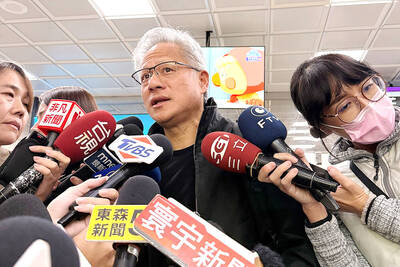The Indian government is weighing capital controls with the rupee on the rise amid fears of “hot money” flowing into the country as investors pile back into Indian assets.
Unlike fellow emerging market giant China, India allows its currency to float freely and the central bank has warned of the dangers of “sharp and volatile” exchange rate movements that could hurt India’s economy.
With the rupee riding at 18-month highs against the dollar, one idea Reserve Bank of India Governor Duvvuri Subbarao is airing to curb sudden big movements in the currency’s value is a tax on foreign exchange transactions, known as a Tobin tax, similar to one Brazil introduced last year.
“Depending on what flows come in, we would employ measures, including if necessary something like the Tobin tax,” Subbarao said last week, referring to a proposal first aired in the 1970s by Yale economics professor James Tobin.
“We prefer long-term flows to short-term flows,” he told a Washington audience on Monday in a speech posted on the bank’s Web site.
Tobin, a Nobel laureate for his work on financial markets, proposed a small levy on every sum changed from one currency into another to curb short-term speculation, stabilize currency markets and encourage long-term investment.
Portfolio flows into India from foreign countries between April and December last year nearly equaled the total from 2000 to 2005, driving up demand for the rupee and causing it to strengthen against other currencies.
A further surge in capital inflows “could force [Indian] policymakers to resort to more active means, a la Brazil,” economist Hemant Mishra of Standard Chartered Bank said in a recent commentary.
The currency has risen 5 percent against the dollar since the start of the year to trade at about 44.36 rupees per dollar on Friday, following a record low in October 2008.
The rise has been similar against the yen this year and more impressive against European currencies. The rupee is up close to 9 percent against the pound and 11 percent against the euro.
Analysts say the Indian currency could be trading below 44 rupees to the dollar by next month.
But India knows all too well what can happen when foreign investors’ ardor for its assets wanes.
As the credit crisis spread across the globe in 2008 and risk appetite evaporated, the rupee slid by 27 percent to breach the 50-rupee level to the dollar in the space of months as foreign investors stampeded for the exits.
India is in desperate need of investment to update its dilapidated roads, ports and other infrastructure, but speculative capital flows can be destabilizing, resulting in sharp movements in asset prices, economists say.
Along with strong economic growth — officially forecast to reach 8.75 percent this financial year — foreign investors have also been lured by interest rates that are on their way up as the Indian central bank seeks to clamp down on inflation.
Although the currency has yet to regain all its previous strength — it hit a 10-year peak of 39.4 rupees to the dollar in early 2008 — the Reserve Bank is under pressure from exporters to stem its appreciation.
The government must also weigh the fact that as a higher rupee hits exporters, it helps dampen inflation running at a 17-month peak of 9.9 percent by making imports cheaper, economists say.
Exports only account for around 15 percent of the GDP of India’s still inward-looking economy.
“Inflation concerns trump exporters’ complaints about competitiveness” with the central bank, Moody.com economist Nikhilesh Bhattacharyya said.
“Taking measures to depress the rupee at the current juncture would add to imported inflation pressures when consumer prices are rising at some of the fastest rates in a decade,” Bhattacharyya said.
Instead of trying to depress the rupee, the central bank “appears to favor actions to discourage short-term capital flows, which have fed into asset price inflation across Asia,” Bhattacharyya said.

PERSISTENT RUMORS: Nvidia’s CEO said the firm is not in talks to sell AI chips to China, but he would welcome a change in US policy barring the activity Nvidia Corp CEO Jensen Huang (黃仁勳) said his company is not in discussions to sell its Blackwell artificial intelligence (AI) chips to Chinese firms, waving off speculation it is trying to engineer a return to the world’s largest semiconductor market. Huang, who arrived in Taiwan yesterday ahead of meetings with longtime partner Taiwan Semiconductor Manufacturing Co (TSMC, 台積電), took the opportunity to clarify recent comments about the US-China AI race. The Nvidia head caused a stir in an interview this week with the Financial Times, in which he was quoted as saying “China will win” the AI race. Huang yesterday said

Japanese technology giant Softbank Group Corp said Tuesday it has sold its stake in Nvidia Corp, raising US$5.8 billion to pour into other investments. It also reported its profit nearly tripled in the first half of this fiscal year from a year earlier. Tokyo-based Softbank said it sold the stake in Silicon Vally-based Nvidia last month, a move that reflects its shift in focus to OpenAI, owner of the artificial intelligence (AI) chatbot ChatGPT. Softbank reported its profit in the April-to-September period soared to about 2.5 trillion yen (about US$13 billion). Its sales for the six month period rose 7.7 percent year-on-year

Nissan Motor Co has agreed to sell its global headquarters in Yokohama for ¥97 billion (US$630 million) to a group sponsored by Taiwanese autoparts maker Minth Group (敏實集團), as the struggling automaker seeks to shore up its financial position. The acquisition is led by a special purchase company managed by KJR Management Ltd, a Japanese real-estate unit of private equity giant KKR & Co, people familiar with the matter said. KJR said it would act as asset manager together with Mizuho Real Estate Management Co. Nissan is undergoing a broad cost-cutting campaign by eliminating jobs and shuttering plants as it grapples

MORE WEIGHT: The national weighting was raised in one index while holding steady in two others, while several companies rose or fell in prominence MSCI Inc, a global index provider, has raised Taiwan’s weighting in one of its major indices and left the country’s weighting unchanged in two other indices after a regular index review. In a statement released on Thursday, MSCI said it has upgraded Taiwan’s weighting in the MSCI All-Country World Index by 0.02 percentage points to 2.25 percent, while maintaining the weighting in the MSCI Emerging Markets Index, the most closely watched by foreign institutional investors, at 20.46 percent. Additionally, the index provider has left Taiwan’s weighting in the MSCI All-Country Asia ex-Japan Index unchanged at 23.15 percent. The latest index adjustments are to